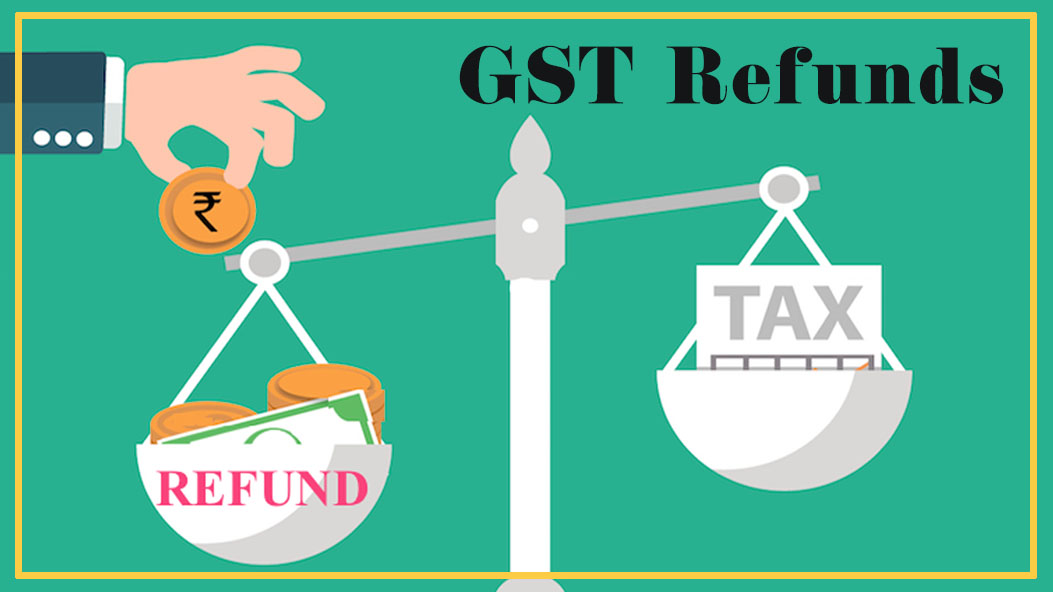- September 25, 2023
- Posted by: IBA LLP
- Category: Articles, Indirect Tax

The concept of refund under GST relates to any amount returned by the government that was paid by the registered taxpayer either in excess or not liable to be taxed or process in which registered taxpayer could claim excess amount if they paid more than the GST liability. Any person claiming a refund of any tax or interest if any, may make an application before the expiry of two years from the relevant date in such form and manner may be prescribed.
Scope of Refund under GST :
Explanation to section 54 of the CGST act 2017 defines the term “refund” which includes: (i) Refund of tax (output tax) paid on zero-rated supplies of goods and/or services, or (ii) Refund of tax (input tax) on inputs or input services used in making zero-rated supplies, or (iii) Refund of tax in pursuance of section 77, or (iv) Refund of the unutilized input tax credit as provided under section 54(3) of the CGST Act 2017 i.e., due to inverted duty structure. The aforesaid explanation prescribes the situations in which the refund can be granted as the term used in the aforesaid explanation is that refund ‘includes’. It clearly means that there can be various other situations under the above provisions wherein a refund can be granted to the person and/or the registered persons.
Filing for GST Refunds :
Once you have identified that you have a GST claim for a refund then you need to file your claim through GST Refund Form RFD-01 and this GST claim needs to be made within 2 years of the “relevant date” of the GST refunds application. The term “relevant date” is defined for different GST Refund scenarios.
In case you fail to file your GST claim within mentioned timelines then it could be possible that a GST refund may have lapsed. When the assessee submits his GST Refund form he gets an acknowledgment form GST RFD-02 which is auto-generated. This GST Refund form RFD-02 helps the assessee for any future reference related to their GST refund and it is also communicated to taxpayers through email or as an SMS.
After submission of GST RFD-01, If the department concerned officers found any deficiencies, then the concerned officer will raise a deficiency letter in the form of RFD-03 and the assessee needs to reply to these deficiency letters within the prescribed time mentioned under RFD-03. The concerned officer may raise the Deficiency memo a maximum of 2 times thereafter the filed application may be rejected by the concerned officer.
Processing of GST Refunds :
GST refunds are processed normally within a period of 30 days from filing a GST refund application. This period may alter in some cases depending on the amount of GST refunds to be processed. The GST claim application shall undergo scrutiny or audit as may be applicable and the said amount shall be processed to the taxpayer’s account when found eligible. In case the adjudicating body finds that
the taxpayer comes under the category of being “unjustly enriching” then the GST refunds amount shall be transferred to the Consumer Welfare Fund.
The GST Refund process is thorough and effective. It follows the trail of invoices to process the GST claim and is designed by keeping in mind the ease for manufacturers and exporters. Previously tax refunds that used to take years to pass is now being processed within not more than sixty days.
Functionality to withdraw Refund Application :
The functionality to withdraw a Refund Application filed by the taxpayer is given on GST Common Portal w.e.f. February 2021 in Form GST RFD-01W until the Refund Processing Officer issues an acknowledgment in Form GST RFD-02 or a deficiency memo in Form GST RFD-03. Earlier the taxpayers had no option to withdraw their refund applications if they have committed any mistakes while filing the application. A functionality has now been implemented for the taxpayer, to withdraw an already filed refund application, by filing Form GST RFD-01W.
Below are the important points that we need to remember or consider before filing GST RFD-01 :
- Verification of the relevant invoice on which ITC has been claimed is reported and the corresponding tax is paid by the supplier (2A vs 3B).
- Verification of Annexure-B with reference to the GSTR-2A for the corresponding period.
- Bifurcation of the Input tax credit as the refund of ITC paid on capital goods is not allowed.
- Verify whether the outward sales are reported in GSTR-1 and GSTR-3B return for the relevant period.
- Verify whether any input credit is claimed for the items mentioned in Sec 17(5).
- Ensure that the statement 3 (Invoice details) & 3A (Calculation of refund amount) are filed in case of Exports without payment of tax.
Author: Sakshi Sachdeva
